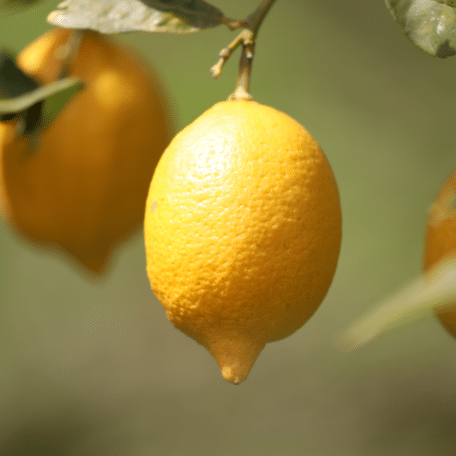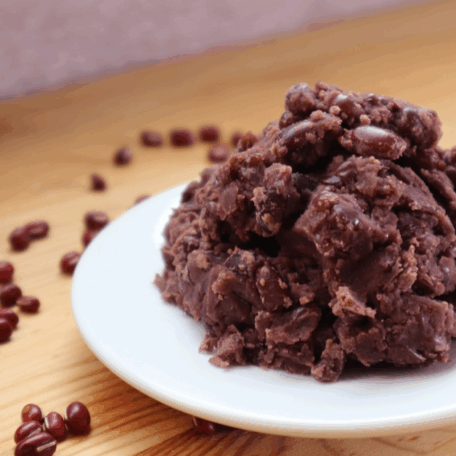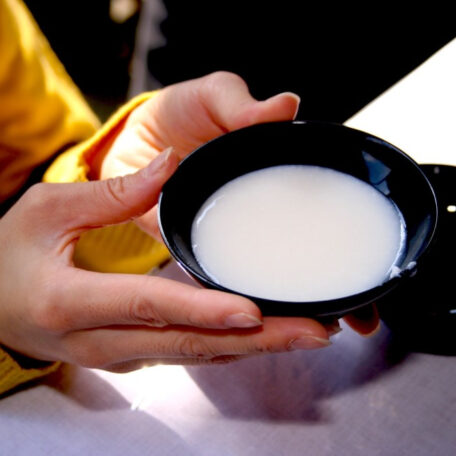Kaiseki Ryouri – Historical Haute Cuisine
Feb 2, 2020
BY Michelle Lam

Since the Heian period, the Japanese knew how to enjoy their food. With emphasis on freshness, seasonal tastes and local specialties, Kaiseki ryouri evolved throughout the ages. From simple meals served at a tea ceremony to fancy Heian imperial court cuisine with influence from the Buddhist boom during the Kamakura period, to the emphasis upon balance from the Muromachi age of Samurais, modern Kaiseki cuisine has been shaped by many aspects of Japanese culture and history – and now you can taste these dishes too.
Kaiseki meals often come as a course which follow a rough structure. However, each dish is completely at the discretion of the chef who chooses the focus, whether it will be the more ornate Heian court food or the more restrained tea-ceremony cuisine. The structure generally follows:
Sakizuke/ Zensai (Appetizers)
The zensai or sakizuke course features an appetizer similar to an amuse-bouche. Usually with only 3-5 ingredients, the opening dish of the course sets the tone and season for the rest of the meal. Depending on what kind of alcohol ordered, the chef will prepare Sakizuke which has a more tangy taste that complements sake. Zensai, however, can be eaten without any alcohol and holds its own natural flavor.

Suimono (1st Soup Course)
Suimono, literally meaning ‘dish to sip,’ is a refreshing type of clear soup that is meant to cleanse the palate in between dishes. Often very light and slightly umami in taste, it is one of the oldest and most traditional foods in Japanese cuisine. The soup is made from dashi and herbs/ toppings are meticulously added for a balance. Don’t be alarmed if your chef spritz’ water over the covered soup bowls before serving them to you. This is an old tradition from the Samurai era that is meant to detect poison in case an enemy may have put some your meal!
Hassun (Seasonal Platter)
Legend says the ‘Hassun’ derived its name from the 8-inch platter of seasonal delicacies from Japan’s seas and mountains. This course typically includes one kind of sushi accompanied by several smaller dishes with ingredients that change depending on the season. For example, if it is early spring, sea bream ‘tai’ garnished with ‘fukinoto’ butterbuds matches the season. For mid-summer, perhaps it will be ‘unagi’ eel and Japanese ‘imo’ sweet potatoes.

Mukozuke/ O’Tsukuri (Sashimi Plate)
This plate usually follows after the Hassun, but it can be omitted depending on whether the chef chooses to serve sashimi with the seasonal platter or not. As with all sashimi, extra attention is paid to the freshness of the fish and the natural ‘clean’ taste. As such, seasonings are used very sparingly.
Takiawase (Vegetable Course)
The takiawase’s main emphasis is on the vegetables with the meat as only the side dishes. Each ingredient is prepared separately before being plated together with sauces made to complement or enhance the flavor of the vegetables.
Futamono/ Wanmono (2nd Soup Course)
Literally meaning ‘lidded dish,’ futamono, or wanmono (meaning “Japanese bowl”), is a course served in a small bowl or dish with a lid, typically a soup. Don’t get this mixed up with Suimono, as this dish is a course in itself. Its strong, rich flavors are more akin to a meal than a palette cleanser and often features a complex mixture of ingredients.

Yakimono (Grilled Course)
‘Yakimono,’ literally meaning ‘grilled dish,’ comes in many different forms and variations. Some may recognize the term ‘yaki’ in many common Japanese street foods such as teriyaki, okonomiyaki, or takoyaki. That is because they are all ‘yakimono.’ In kaiseki meals, yakimono tend to be fish dishes served with vegetables soaked in sweet vinegar, white ‘daikon’ radish in particular. This is because the grilling process produces toxic chemicals which are mitigated by the daikon’s pungency.
Nimono (Simmered Dish)
Nimono is converse to Yakimono. It’s a dish usually featuring seasonal vegetables simmered in dashi and lightly garnished with extra seasonings. It’s an extremely light dish prepared in a healthy way with a homely, authentic Japanese taste.

Mushimono (Steamed Dish)
The mushimono course boasts a tasty steamed dish such as steamed egg custard or steamed clams. Since steaming is a healthy way to produce natural flavors of the ingredients without losing taste, there are two ways to prepare mushimono: steamed with salt ‘shiomushi’, or with salt and sake ‘sakamushi.’
Shiizakana (Sake Side Dish)
A completely optional course, Shiizakana’s strong flavors are designed to be eaten with sake, and are typically quite intensely savory or salty in flavor. This dish is similar to suimono in that it can be served in between courses to spice up the taste buds between the milder-tasting dishes.
Gohan/ Shokuji (Rice Course)
As the staple of the Japanese diet, the Gohan course is always included in kaiseki cuisine. It revolves around a combination of ingredients that complement rice. For example, cooking meats along with rice in a clay pot enhances the flavor and aroma of the meat as well as the softness of the rice.

Mizumono/ Mizugashi (Dessert)
Like any dinner course, kaiseki meals conclude with dessert called mizumono or mizugashi. This course features a mixture of seasonal fruits and traditional Japanese ‘wagashi’ sweets that opt towards a more opaque, gelatin-like texture, such as brown sugar with agar jelly.
BEST KAISEKI CUISINE PLACES IN KYOTO:
ROAN KIKUNOI
As a 2 Michelin star restaurant, their 13,000 yen dinner kaiseki course might raise some eyebrows, but it is well worth the price. Everything is at the discretion of their chef who likes to play around with traditional kaiseki conventions to bring you a unique experience. Of course, for such an elite dining experience, you need to reserve sometimes months in advance.
Info:
Address:118 Saito-cho, Shijo-sagaru, Kiyamachi-dori, Shimogyo-ku, Kyoto-shi, Kyoto 600-8012
https://goo.gl/maps/FZZ6WnmAfCqHCYKJ9
Hours: 11:30 ~ 13:30, 17:00~20:30
Ph: 075-361-5580

GION KARYO
Perhaps one of the hardest Kaiseki restaurants to secure a reservation for, Gion Karyo is nestled right in the old Gion district and has both the aesthetics and the food down pat. Their lunch Kaiseki is much more affordable: at only 5800 yen, you can enjoy eight dishes. Their dinner courses range from 11,600 ~17,500 yen and offer a wide range of meal options.
Info:
Address: 570-235 Gionmachi Minamigawa, Higashiyama Ward, Kyoto, 605-0074
https://goo.gl/maps/2GDu4ukqLRoYLVD69
Hours: Closed on Wed. Open 11:30~14:00, 18:00~20:00
Ph: 075-532-0025
MIYAMASOU
Miyamasou is a former temple-turned-ryokan in the secluded mountains of Hirogawa. It provides kaiseki meals to its guests with an extreme emphasis on freshness and locality of ingredients. In fact, their ingredients are all hand-picked from the surrounding natural environment and served with the uttermost care. Given the location and the meal, this is a perfect getaway for those wishing for a quieter, more secluded lifestyle.
Info:
Address: 375 Hanaseharachicho, Sakyo Ward, Kyoto, 601-1102
https://goo.gl/maps/ayJyAPRrpZT28ZeAA
Hours: N/A
Ph: 075-746-0231
SHUNSEKI SUZUE
Rumored to be one of the best restaurants in Japan, Suzue’s two Michelin stars are not just for show. This restaurant’s style of cuisine tends more towards the tea ceremony-inspired restraint and emphasis on natural flavors. It prepares its seasonal, fresh ingredients in a simple way to provide the best possible taste. Although their food combinations may sometimes seem weird, trust me when I say that once you try it, you’ll be converted.
Info:
Address: 58-1 Okazaki Enshojicho, Sakyo Ward, Kyoto, 606-8344
https://goo.gl/maps/t2XJzXiraEUNmuSj9
Hours: 17:00~22:00
Ph: 075-771-7777
HYOTEI
We have only touched upon two star Michelin restaurants so far, but Hyotei boasts a THREE star Michelin record and a 400 year history. Their lunch course starts at 20,000 yen whilst their dinner course is 25,000 yen onwards. As a tea house, Hyotei also offers tea ceremony on special occasions. Their meals are all served in traditional-style tatami room with a view of the small garden. For the full, authentic Kaiseki dining experience, I highly recommend Hyotei.
Info:
Address: 35 Nanzenji Kusakawacho, Sakyo Ward, Kyoto, 606-8437
https://goo.gl/maps/wa8FBf7kvuTievwGA
Hours: 7 days a week, 11:00~23:00
Ph: 075-771-4116

Kaiseki Dining Etiquette
Before you hit up these joints, please do try to observe a few of the basic etiquettes of Japanese dining:
Before the meal, be sure to say ‘itadakimasu’ to pay respect to the chef, staff, and wonderful bounty itself.
Only use the towel ‘oshibori’ to wipe your hands, and nothing else.
When selecting meals, use chopsticks properly. Don’t poke, pick up, or cut food into smaller bites, and NEVER stick them upright into the rice dish. This is a funeral rite practice in Japan and is extremely rude, akin to cursing those around you with death. When finished with your chopsticks, place them back on the ‘hashi-oki’ chopstick rest.
When drinking a soup course, use both hands to pick up the bowl and drink directly from the bowl.
After you finish the meal, remember to thank the chef and staff with ‘Gochisou-sama deshita.’
Now that you are armed with all this knowledge, go ahead and partake in the best dining experience Japan has to offer: Kaiseki cuisine.
Traveling to Kyoto after exploring Shiga Prefecture? Be sure to join one of our delicious food tours!
Book your pocket wifi now to stay connected through your entire Japan Journey!

Be sure to get the JR Pass to make navigating Japan during your trip that much easier!

YOU MIGHT ALSO LIKE




